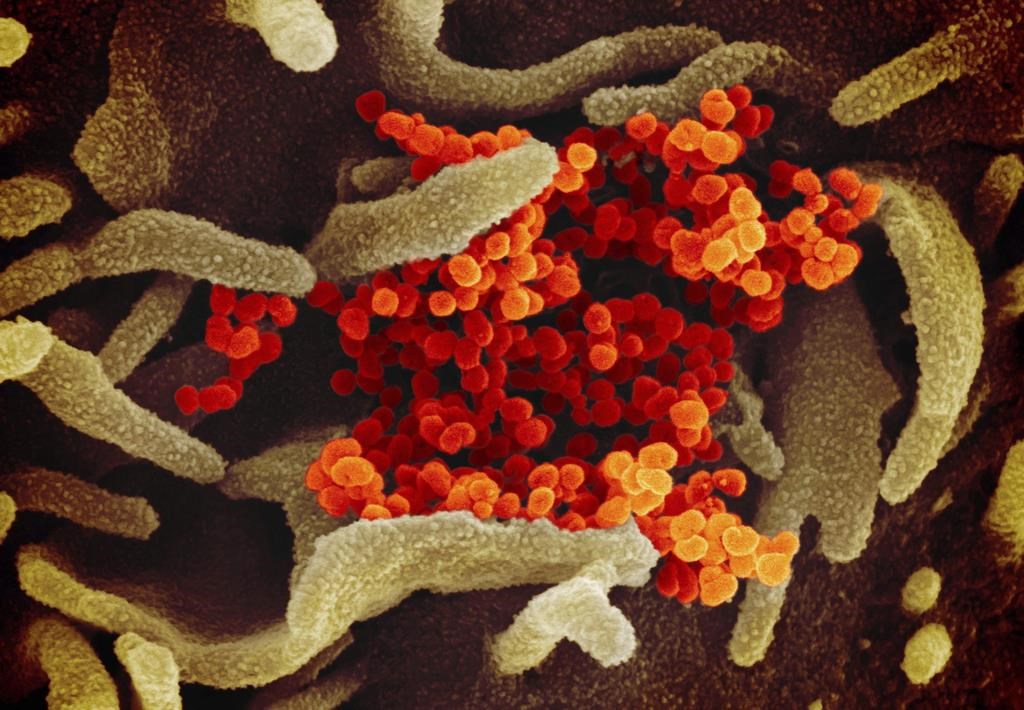A team of researchers at the Université de Moncton is working on a new online form of detection for COVID-19 by way of artificial intelligence, but one expert warns about how far the model can go.

X-ray imaging of lungs can detect the novel coronavirus, says Moulay Akhloufi, the computer science professor and head of the Prime (Perception, Robotics and Intelligent Machines) group at the university.
“Deep learning,” he says, is a way of processing data, such as medical images using artificial intelligence or AI.
But not everyone agrees. The president of the Canadian Society of Thoracic Radiology, for example, says the AI model can’t be counted on to detect COVID-19.

The Moncton team’s model is done by way of a mathematical computer formula, Akhloufi says. The team has obtained a dataset of images that are labelled by doctors.
“They provided X-ray images of COVID-19, X-ray images of other types of diseases like SARS, or other types of pneumonia, and we have some normal X-ray images of the chest,” he says.
Despite some pneumonia diseases having some of the “same characteristics” as COVID-19, he says a “deep learning” model has been trained to determine the difference.
That said, every determination must be confirmed by a doctor, he said.
The need for confirmation is an important message that’s echoed by Dr. Carole Dennie, the president of the Canadian Society of Thoracic Radiology.
Dennie, a diagnostic radiologist and the section head for thoracic imaging at the Ottawa Hospital, says the current recommendation to diagnose COVID-19 from the World Health Organization is the RT-PCR (viral) test. That, she says is “the only specific way to diagnose COVID-19.”
“On X-ray, the findings are somewhat non-specific,” she says. “There are many other types of pneumonia including influenza, pneumonia in other viral pneumonias, that can mimic COVID-19, as well as other types of lung diseases.”
She says even prior to PCR testing, X-rays in most circumstances wouldn’t change the management of a potential case; the possible patient should be self-isolating and abiding by health protocols, regardless.
The PRIME group, which created the online tool, was created in 2017 by Akhloufi.
Fifteen people are included in the group, he says, including master students, PhD students, postdoctoral students and more.
Akhloufi says the team is hoping to be able to work with doctors and medical professionals to bolster its research.
Questions about COVID-19? Here are some things you need to know:
Health officials caution against all international travel. Returning travellers are legally obligated to self-isolate for 14 days, beginning March 26, in case they develop symptoms and to prevent spreading the virus to others. Some provinces and territories have also implemented additional recommendations or enforcement measures to ensure those returning to the area self-isolate.
Symptoms can include fever, cough and difficulty breathing — very similar to a cold or flu. Some people can develop a more severe illness. People most at risk of this include older adults and people with severe chronic medical conditions like heart, lung or kidney disease. If you develop symptoms, contact public health authorities.
To prevent the virus from spreading, experts recommend frequent handwashing and coughing into your sleeve. They also recommend minimizing contact with others, staying home as much as possible and maintaining a distance of two metres from other people if you go out.
For full COVID-19 coverage from Global News, click here.






Comments